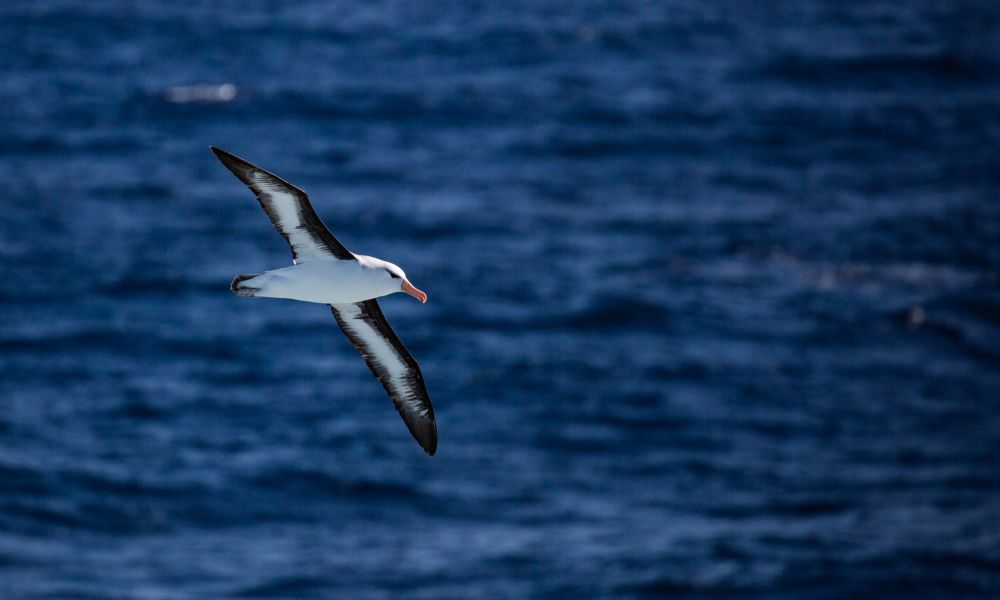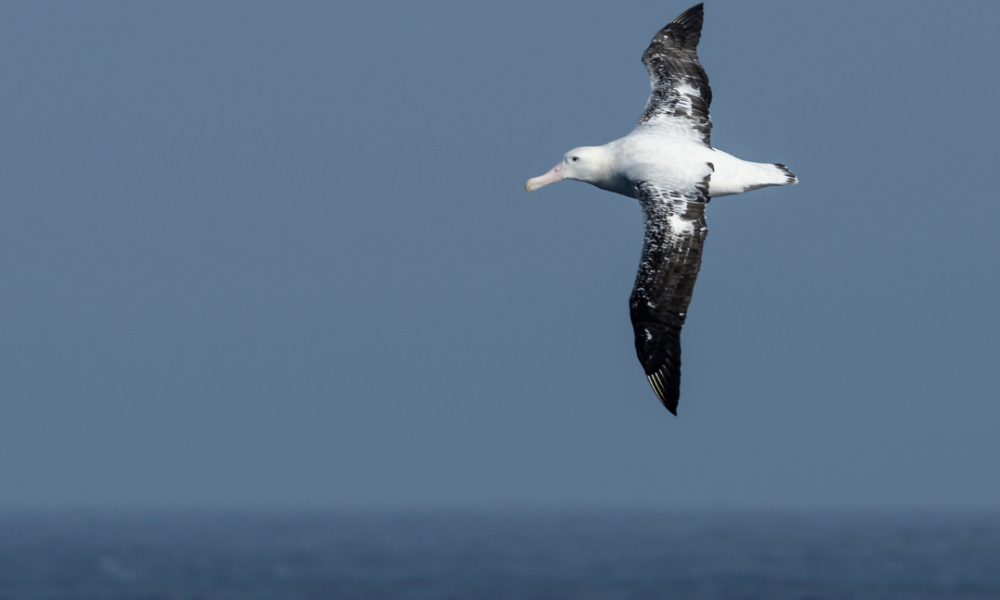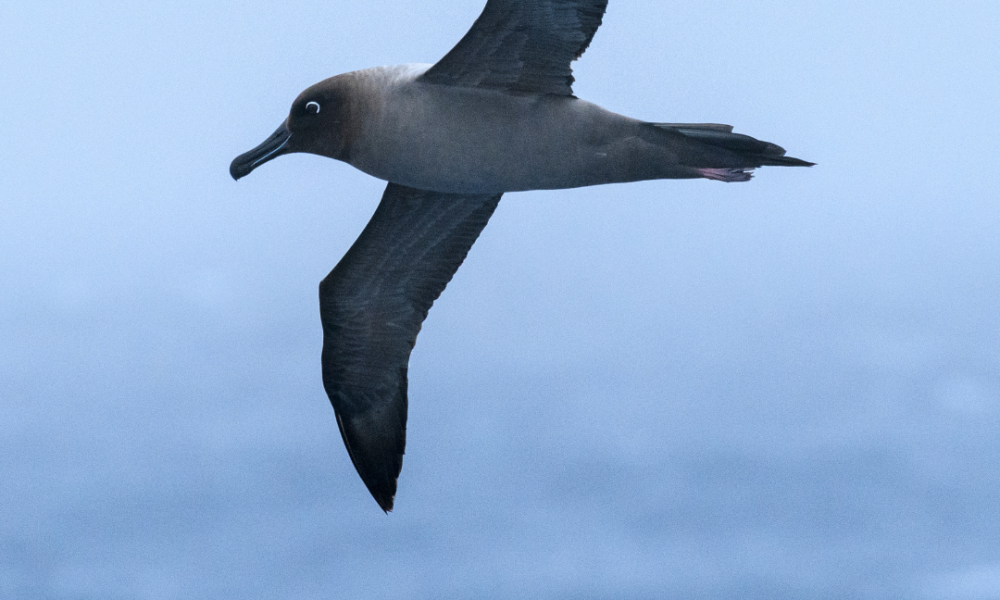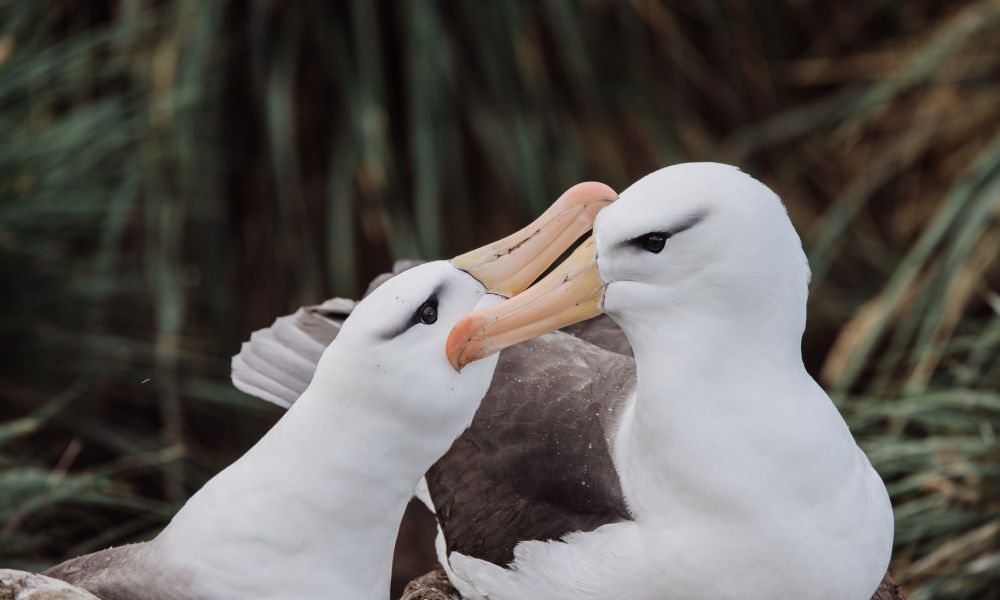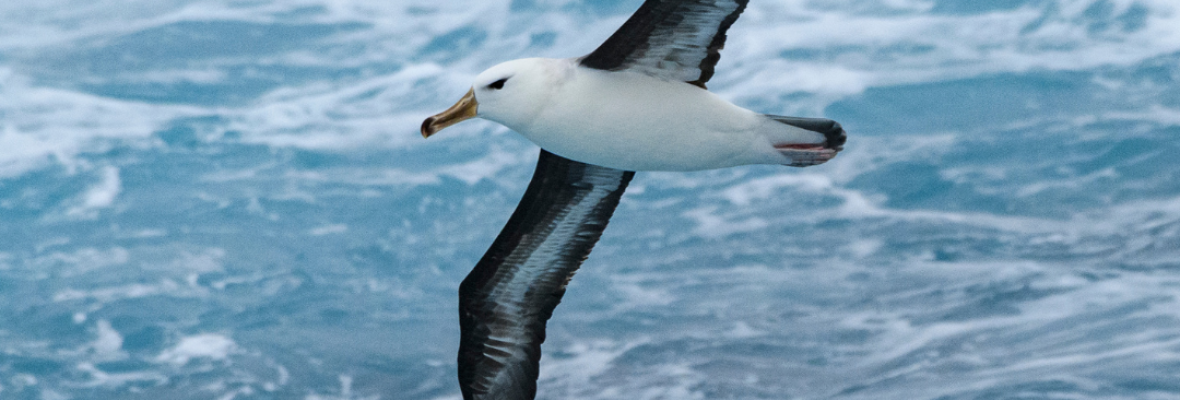Albatross
Considered one of the largest flying seabirds by wingspan, albatrosses spend most of their time above the oceans due to their exceptional gliding flight ability and capacity to sleep while flying.
Facts about Albatross
- Antarctica
- Antarctic Peninsula
- Falkland Islands
- South Georgia
- South Shetland Islands
- Arctic
- Iceland
- Jan Mayen
- South America
- Argentina
Scientific Name: Diomedeidae
Population: Estimated at 1.5-2 million globally, varying by species
Regions: Southern Ocean, North Pacific (some species), Antarctic Sea, sub-Antarctic islands, coastal waters off South America, Africa, Australia, New Zealand
Destinations: Falkland Islands, South Shetland Islands, Antarctic Peninsula, South Georgia, Jan Mayen, Argentina
Average Length: 70–135 cm (28–53 inches), varying by species.
Average Weight: 5–12 kg (11–26 lbs), varying by species
Diet Habits: Primarily surface-feeding on fish, squid, crustaceans, and carrion
Kingdom: Animalia
Phylum: Chordata
Class: Aves
Order: Procellariiformes
Family: Diomedeidae
Genus: Diomedea, Thalassarche, Phoebastria and Phoebetria
English: Albatross
Danish: Albatros
Chinese: 信天翁 (Xìntiānwēng)
Swedish: Albatross
Finnish: Albatrossi
Norwegian: Albatross
Polish: Albatros
Japanese: アホウドリ (Ahōdori)
Spanish: Albatros
French: Albatros
Questions Guests Ask About Albatrosses
How big is an albatross?
This species is one of the largest among other flying birds, with an average weight of 5–12 kg (11–26 lbs) and a length of 70–135 cm (28–53 inches). The wandering albatross (also called the snowy albatross) and the southern royal albatross are the two largest species. One of the reasons for this size is their massive wingspans.
What is the wingspan of an albatross?
This bird has extremely long and narrow wings. More precisely, it is regarded as the species with the largest wingspan, with measurements ranging from 2.1 to 3.5 metres, with the black-footed albatross having the smallest and the wandering albatross the largest. This large wing makes albatrosses masters of gliding, allowing them to spend hours in the sky without resting and flying at an impressive speed of up to 110 km/h in strong winds.
What are the different types of albatross?
There are up to 22 albatross species, categorized into four genera: Diomedea, Thalassarche, Phoebastria, and Phoebetria. Among all the species, there are different suggestions among the experts about whether some of them are local subspecies or independent species. The majority live the primary part of their lives in the southern oceans and during summer in the Antarctic sea.
On Albatros Expeditions ships, Ocean Albatros and Ocean Victory, you might have the luck of spotting one of those birds!Would you like to learn about the 22 different species and some details about each?
- Great Albatross (Diomedea): These are the largest albatrosses and are actually among the largest living birds in the world! They are known for their expansive wingspans and are primarily found in the Southern Ocean, including the Antarctic, sub-Antarctic, and subtropical waters. They spend most of their lives above the ocean, flying many miles each day using a flight technique called 'dynamic soaring.'
1. Wandering Albatross or Snowy Albatross (Diomedea exulans)
2. Antipodean Albatross (Diomedea antipodensis)
3. Tristan Albatross (Diomedea dabbenena)
4. Amsterdam Albatross (Diomedea amsterdamensis)
5. Southern Royal Albatross (Diomedea epomophora)
6. Northern Royal Albatross (Diomedea sanfordi)
- Mollymawks (Thalassarche): Medium-sized albatrosses primarily found in the Southern Hemisphere, and among all their species, only two do not breed in New Zealand. Their appearance is akin to gulls, with dark upperparts and lighter underparts. They have a pinkish flesh stripe from their gape to their ear, which helps explorers and Albatros Expeditions guests easily recognise this wildlife in their natural habitat.
7. Black-browed Albatross (Thalassarche melanophris)
8. Campbell Albatross (Thalassarche impavida)
9. Shy Albatross (Thalassarche cauta)
10. White-capped Albatross (Thalassarche steadi)
11. Chatham Albatross (Thalassarche eremita)
12. Salvin's Albatross (Thalassarche salvini)
13. Grey-headed Albatross (Thalassarche chrysostoma)
14. Atlantic Yellow-nosed Albatross (Thalassarche chlororhynchos)
15. Indian Yellow-nosed Albatross (Thalassarche carteri)
16. Buller's Albatross (Thalassarche bulleri)
- North Pacific Albatross (Phoebastria): As you can imagine from their name, this species is mainly found in the North Pacific regions, particularly in tropical areas. These large seabirds can be seen in various locations, such as many Hawaiian islands, Ecuador, Peru, and even Japan!
17. Laysan Albatross (Phoebastria immutabilis)
18. Black-footed Albatross (Phoebastria nigripes)
19. Short-tailed Albatross (Phoebastria albatrus)
20. Waved Albatross (Phoebastria irrorata)
- Sooty Albatross (Phoebetria): These birds look quite different from other species, characterised by their darker plumage with brownish and blackish colours. With their slender bodies and distinctive eyes, they are usually found in the sub-Antarctic and subtropical waters of the Southern Atlantic and Indian Oceans.
21. Sooty Albatross (Phoebetria fusca)
22. Light-mantled Albatross (Phoebetria palpebrata)
Where do albatrosses live?
The albatross habitat is primarily in the Southern Hemisphere, in regions such as South Georgia and the Falkland Islands. Some species, like the Laysan albatross, live in the North Pacific.
How long can an albatross fly?
One of the most amazing albatross characteristics is that they can spend months flying without touching land, and as a result, spend 85% of their lives at sea. Additionally, they can fly thousands of kilometres without flapping their wings by using wind currents and dynamic soaring, and for that, they can even sleep while flying!
What do albatrosses eat?
Albatross diet consists primarily of fish, squid and crustaceans that they primarily take from the water's surface, although they can also dive to about 10 meters for prey.
How long does an albatross live?
Albatross birds have one of the longest lifespans compared to other birds. They usually live more than 50 years, with some of the largest species reaching 70-80 years.
How Many of These 10 Albatross Facts Did You Already Know?
Fact #1: They are monogamous birds.
Fact #2: They breed in colonies.
Fact #3: The wandering albatross's wingspan can be as large as 3.5 meters.
Fact #4: This seabird can sleep while flying.
Fact #5: They have the longest incubation period among all bird species.
Fact #6: They lay just one egg, and the chick becomes capable of flying and living independently only after it is over a year old.
Fact #7: These birds possess a highly developed sense of smell, which helps them find food and locate their colonies.
Fact #8: Some of the species resemble giant gulls, but they are larger, with bigger bills and longer wings that glide slowly.
Fact #9: One of the biggest threats to albatrosses is longline fishing, where the birds bite the bait and drown.
Fact #10: World Albatross Day is June 19th, and it is celebrated to raise awareness for the conservation of this incredible bird.
Join on an Antarctica adventure with Albatros Expeditions and witness the wonders of Antarctica wildlife!
